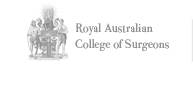Liver Transplantation
The information provided here is a guide, and reflects only the views of Dr Crawford
The Liver
The liver is a large organ in the upper abdomen, just below the diaphragm. It is a major source of proteins for the body and processes much of the food we eat. It also secretes bile via the bile ducts into the gut. The gallbladder (D) stores bile. It is connected to the main bile duct (A) and hangs off the liver.
The liver receives blood from two sources; the portal vein (B) and the hepatic artery (C). Blood leaves the liver through hepatic veins (E) into the vena cava just below the diaphragm. The liver is divided into eight anatomical segments by the branches of its veins.
Liver Transplant
A liver transplant involves removing the entire liver and replacing it with a liver from a donor. This is long and complicated surgery, taking between 3 and 6 hours. Expert anaesthesia is required.
Who needs a liver transplant?
Patients with end-stage liver disease from any cause might be suitable for liver transplant. The vast majority have advanced cirrhosis of the liver. The process of selection for this procedure is complicated and involves many health professionals. Because donor organs are in short supply it is important that the long-term results of liver transplant are good. Therefore, patients whose life-expectancy after transplant is poor are generally not offered transplants. Patients small primary liver cancers are generally considered, but those with large cancers, or secondary cancers are not.
What tests are done?
A standard battery of tests are performed including blood tests, x-rays (including CT scan), ECG and cardiac echo, bone densitometry, viral screening etc. Further specific tests are often required according to individual patient risks. The aim of the tests is to rule out cancer, or other diseases that might impact on the outcome after a liver transplant, and also to ensure fitness for the surgery itself.
How is the liver transplanted?
The donor liver is a generous gift from a person who has usually died suddenly and unexpectedly. An expert team of surgeons performs an operation at the hospital where the donor has died. During this operation the liver is flushed to remove blood and stored in a preservation solution at 4 degrees. The liver is transported back to the transplant hospital in ice. The liver can survive like this for many hours but not days. Once the liver has made it to the hospital the operation begins. There are lots of drips and monitoring devices placed by the anaesthetist. A large upside down Y incision is made in the upper abdomen. The liver is mobilised off its attachments and the portal vein and hepatic artery are clamped off and cut. The inferior vena cava is clamped and the liver is removed.
The new liver is now sewn in by connecting all the blood vessels and bile duct up. It starts to function almost straight away. Drains are always placed in the abdomen to drain any blood or bile.
The postoperative course
The postoperative course is different for each person. All patients are admitted to Intensive Care for at least the first postoperative night. The majority of patients will stay on a ventilator for the first postoperative night. Patients are usually transferred to the ward on the second or third day after transplant, and quickly return to a normal diet. Patients can expect a 2-3 week stay in hospital to recover from the surgery and stabilise their medications. If complications occur they can expect to stay longer.
Immunosuppression
All patients will take medicines to control rejection for the rest of their lives. These start off as high dose until the body gets ‘used to’ the new liver, and are gradually tapered down to a small number of tablets. Regular blood tests are required especially early on to ensure the dose is the correct one. Some patients suffer side effects of the medicine that include; diabetes, blood pressure, kidney dysfunction, and tremors. Most of these are easily managed by the transplant team.
What are the potential complications?
The risks of complications vary between patients. In general, the sicker the patient, the higher the risk. The risks are also higher if the patient has significant other illnesses.
Potential complications of liver transplant surgery include (but not limited to);
- Bile leak. Bile may leak from the join in the bile duct. If this happens it may be necessary to operate to repair it.
- Bleeding. Bleeding may occur during the surgery (requiring transfusion), or post operatively occasionally requiring a return to the operating room to control bleeding.
- Intra-abdominal collection. Fluid may accumulate near the liver (blood or bile) that can become infected and occasionally needs to be drained.
- Primary non function. This is a rare complication where the transplanted liver fails to function adequately and requires an urgent re-transplant.
- Hepatic artery thrombosis. If the artery clots in the early days after transplant, there is a risk that the liver will fail leading to a re-transplant. If the artery clots later it may be associated with bile duct problems down the track.
- Respiratory problems. Most patients have some initial shortness of breath because of irritation of the diaphragm and wound pain. Some will go on to develop some fluid around the lung that may require drainage.
- Wound infection. Because of the immunosuppressive medicines and the major surgery wound infection is not uncommon. It usually is easily managed on the ward
- Rejection. Acute rejection occurs in around 1/3 of liver transplant patients. It is diagnosed by blood tests, and confirmed by biopsy. It is almost always treatable but requires a short re-visit to hospital.
- Infections. After transplant the immune system is dampened to help prevent rejection and this means there is a higher risk of infections of all types.
- Cancer. Transplant patients are at a higher risk of cancer development, because under normal conditions the immune system helps to fight cancer in the body.
FAQs
I have liver cancer, can I have a transplant?
Only those with small (< 5cm) hepatocellular cancers are considered for transplant. This is because larger or other types of cancer have an unacceptably high risk of returning in an aggressive way after transplant.
Will I be able to eat normally afterwards?
Yes, there are no dietary restrictions.
I have hepatitis C, will it be cured by transplant?
No, unlike hepatitis B where there are extremely effective treatments available, hepatitis C will not be cured by transplant. Instead, the cirrhotic burnt out liver will be replaced by a fresh one. Unless a cure is found most patients with hepatitis C will see it affect the new liver, but hopefully only after many years. A small number, around 5%, have a very aggressive early type of recurrence of hepatitis C.
How long will I be on the waiting list?
Unfortunately some patients wait many months or years for a liver transplant.
What are my chances of surviving?
More than 90% of patients survive the first year and just under 80% are alive at 5 years.
Can I use a live donor?
At the moment we only offer this option for children recipients. In the future this may be available for adults as it is in other parts of the world.
I would like to register as a donor, what should I do?
Most importantly, tell your family your wishes. You can register on the Australian Organ Donor Register Tel. 1800 777 203 More information about organ donation can be found here (www.betterhealth.vic.gov.au/bhcv2/bhcarticles.nsf/pages/Organ_Donor_Registry/)
For more information about liver transplant follow the information link on the Australian National Liver Transplant Unit website. www.anltu.com.au






 Meet
Meet



